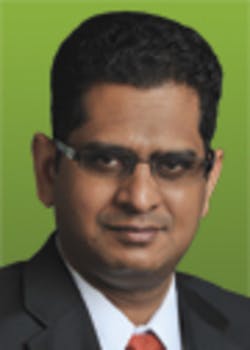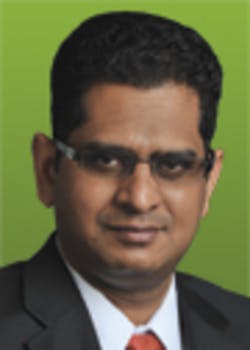Patient safety, quality and efficiency can all improve with better document management practices.
Sreekant
Gotti
In a world where healthcare providers must respond rapidly to change, California’s Prime Healthcare Services moves quicker than most. Ten hospital acquisitions in the last few years will have that effect, as will the host of other regulatory, economic and technology demands currently converging on the organization and others like it.
Prime Healthcare has found that, despite its size – 14 hospitals comprising 2,400 beds and 9,000 employees – and recent acquisitions, a strong healthcare IT base has kept it moving ahead and effectively overcoming industry hurdles. Of these 14 hospitals, 12 hospitals are under Prime Healthcare Services and two hospitals are under Prime Healthcare Services Foundation.
Document management is one area that Prime Healthcare has successfully navigated on a system-wide scale. With hundreds of paper forms in use, leadership identified numerous potential pitfalls associated with a manual process. In fact, the organization’s rapid expansion has served to highlight the need for a cohesive solution for document management delivered throughout the entire network.
Finding the right partner
While the organization was beginning to reap the benefits of automation via its integrated clinical and financial technologies, including electronic health records (EHRs) and a health information system (HIS), Prime Healthcare facilities were still heavily dependent on paper. The health system was relying upon hard copies of admissions, clinical and operations forms that needed to be converted to electronic format. Knowing that manually completed forms and stacks of preprinted papers could lead to problems in both patient safety and finances, IT leadership searched for a full-featured document management system.
Prime Healthcare had specific demands of its solution. For one, it needed a technology that could scale to its large, multi-hospital system to ensure it had a consistent technology at all facilities, which would streamline deployment and allow the seamless flow of data between hospitals. The organization also needed a system that would enable it to quickly update forms. Even when minor changes were required, such as an update to a HIPAA authorization form that a patient receives upon check-in, staff needed to discard all the old, preprinted documents and generate a new batch of forms, adding expense and wasting employees’ time. Prime needed to eliminate this misuse of resources and ensure accurate information across its facilities.
After searching for a document management solution, Prime Healthcare came across FormFast’s logic-based, on-demand workflow and print management system for automating medical records, revenue cycle and patient registration documentation processes. This solution could be seamlessly integrated with other healthcare IT applications, such as the HIS and EHR systems already in use at Prime Healthcare’s hospitals.
Implementing the program
Prime Healthcare needed implementation to progress relatively quickly and a strict timeline was developed. Rules-based functionality enabled the IT staff to easily assign different rules to the various system users, such as patient access personnel or emergency department (ED) nurses. This made system management much easier for the implementation team at Prime Healthcare, given the number of employees using the application at any given time.
Following a rapid implementation process, IT leadership began training clinicians and other staff. Executives were pleasantly surprised that the organization’s 400-plus users could be fully trained on the system in about 10 minutes per session. Demonstrating the new system to several groups of individuals at once meant Prime Healthcare was able to complete all training within just a few days.
Prime Healthcare also took advantage of the transition to create updated new forms, optimizing an easy-to-use design feature developed by FormFast specifically for medical facilities. It wasn’t long before Prime Healthcare had eliminated pre-printed forms for many purposes throughout the multi-hospital system.
The process in practice
When a patient is admitted, staff is able to quickly select and print out the appropriate forms for each individual’s situation. If necessary, forms are completed manually by the patient and signatures are obtained. These documents are then digitized using a high-speed scanner. Once documents are scanned, the data is electronically routed to the correct place in the medical record, guided by barcodes that identify the patient and type of documentation. This prevents time lost in entering data and eliminates errors that can be introduced in data entry – a definite patient safety improvement.
Meanwhile, if nurses or physicians require a specific document, they do not have to search for preprinted forms stored away in a filing cabinet. The system intelligently tracks what forms are necessary for the encounter by parameters designed by the facility. Users then log on and print the specific form according to the exact patient requirements. Hospitals also can set chart forms to be generated automatically in batches, freeing unit clerks or nurses to focus on other tasks.
And since Prime Healthcare’s workflow processes and document management activities are now tightly integrated with its EHR and HIS systems, users can print forms or reports directly from these tools. If a clinician requires a hardcopy of a certain document, such as a radiology report, it can be sent directly to the nursing station and distributed as necessary. Hospital staff in any department can also enter patient data, route the forms to multiple departments and print the completed items when necessary – without the delay and expense of routing hard copies.
All 14 facilities managed by Prime Healthcare are now taking advantage of this automated workflow model, which can be easily scaled to accommodate additional users and systems.
The ultimate reward: efficiency and patient safety
Prime Healthcare began realizing clinical and financial benefits soon after organization-wide deployment of the document management system. For example, when a clinical chart is scanned, data can be directed to both the EHR and the hospital’s billing department. This means that when the patient is discharged, financial services personnel can print out the most up-to-date version of the patient’s bill. Similarly, more accurate and timely claims can be generated, meaning the organization is able to receive reimbursements more quickly, improving cash flow. Further, users have reported that since they aren’t chasing down paper documents, they are significantly more efficient and productive. And with less manual data entry, clinicians have reported a noticeable uptick in the quality of clinical information.
While cost savings and efficiency are, of course, some favorable outcomes of Prime Healthcare’s investment in technology, they are not the most important benefits. The organization’s standard for patient safety and quality are paramount. The health system’s IT efforts have decreased manual errors, helped to ensure accurate information and freed staff to spend more time with patients.
Eventually, all paper forms may disappear from the hospital environment. But, for the time being, every medical facility must deal partially in paper documentation. Prime Healthcare has achieved many important efficiency, quality and patient-safety objectives with the implementation of a comprehensive IT strategy that includes document management. It is now clear that Prime Healthcare’s ability to manage paper in the most effective means possible has played a vital role in the organization’s success.
Sreekant Gotti is the corporate chief information officer of Prime Healthcare Management.
Click here for more on FormFast




